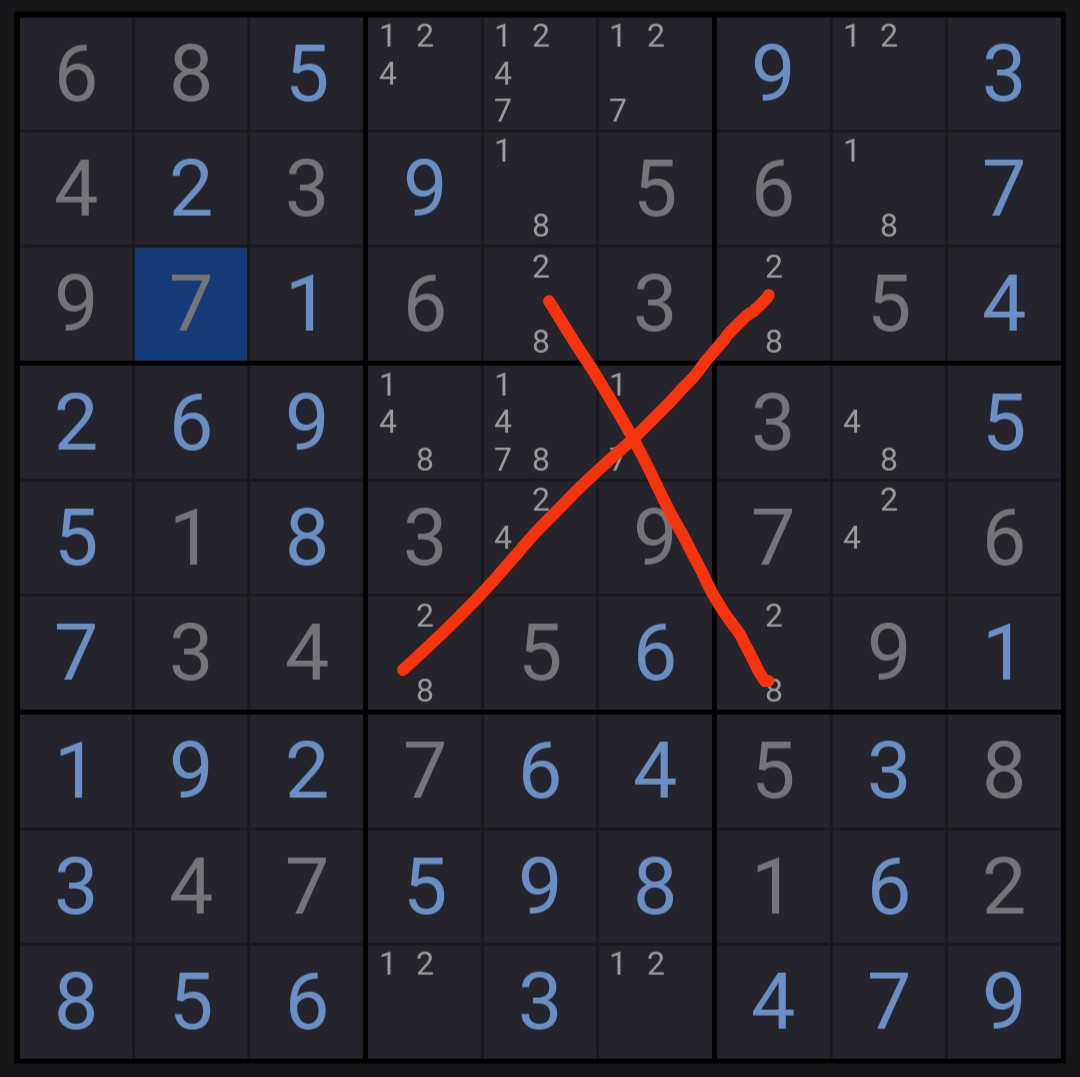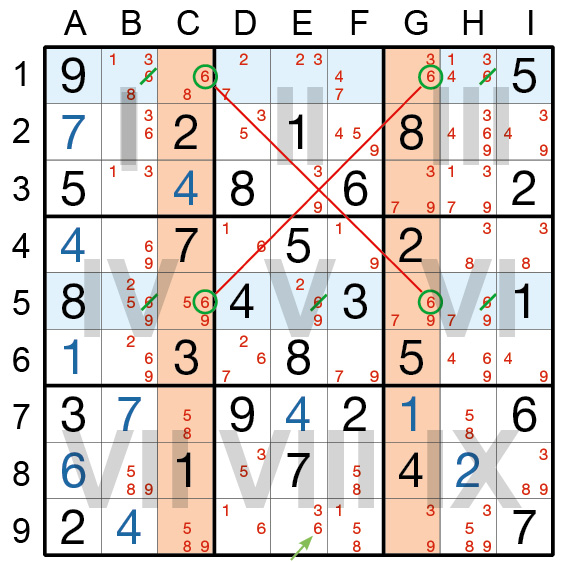

In each cross line, A and B must appear once, therefore in the the three cross lines A and B must each appear three times. The aim is to find two 'target' cells that will together contain the digits which are in the base.

Okay, scratch my older comments, I've now perfectly understood the logic of the JExocet. So, Elimination Rule 8 should be something like: After Eliminations, if both True Base Digits are determined, and a Mirror Node contains only one possible non-Base Digit, it is true in that Node and Eliminated from all Cells that See both Mirror Cells, or if the non-Base Digit occupies just one Mirror Cell, it is fixed in that Cell and Eliminated from all Cells that See the Mirror Cell.Īll this was probably discussed on The New Sudoku Players' Forum, but I find it too difficult to follow. While examining the pattern, the only way we can know that a Base Digit is "True" is if previous eliminations reduce the Base Cells to a Locked Pair (I think). In fact, it's the False Base Digit (R4C9=5) that correctly resolves in the Mirror Node. In the above puzzle, the Base Digits are 2, 5, and 6, however, while examining the pattern, we don't know which are true and which are false. What's missing is that it must be a "True" Base Digit. However, this is inconsistent because the Puzzle solves with R4C9=5.īy definition, a Mirror Node must resolve to one Base Digit and one non-Base Digit. So, Bird's Elimination Rule 8 just coincidentally fixed the correct Digit in the first three.Ġ60000009020005000008070100007003000830010097000400800004080900000600010500000020Īfter Singles, Pairs, Intersection Reductions, WXYZ-Wing, and Exocet Elimination Rule 3 (your Elimination Rule 1), I get to Elimination Rule 8, which by Bird's definition gives R4C9=1. I found three Puzzles that correctly solve after fixing a Digit in a Mirror Node because of Elimination Rule 8, however I also found one Puzzle where this rule produced inconsistent results. Regarding Elimination Rule 8, I agree with you that strictly applying Bird's definition produces incorrect Eliminations. I don't understand what are you talking about? Finally, the rule of type 1 I understand. What are the stars*** cells? is the target cell (158+N) but is not valid? Is it mandatory to lie close to each other in the same row, or is it okay to lie randomly in the box? Looking at the picture below T1=(158+4) & T2=(158+27), I don't see anything called a mirror box? (r3c89 has no hidden 4, r2c56 has no hidden 27. Is the companion cell an opened one or the original one? Is (2,4) in box (2,3) a companion cell? Or force the companion box to be (3,6). So where are the S-cells in column 3? Why choose column 3 as S-cells? So I still don't fully understand this solution, what kind of hidden & how it works. The way you use words and name the cells and hides is too flowery. Terms and references to the original will be supplied. I don't intend to duplicate David's work but just the parts implemented by the solver and re-expressed in my own way.

Any other credits not mentioned, please email me. I would also like to credit Phil's Sudoku Solver as a source of examples and help. My main source is the excellent JExocet Compendium written by David P Bird, available in fourteen downloadable documents on the EnjoySudoku Forum and David was kind enough to answer questions as well. The pattern was first discovered by Allan Barker in the " Fata Morgana" puzzle. I am told the name was coined by forum participant Champagne. David Bird tells me it can go after the basics but that will have to wait until more variations are in place.ĬreditsA number of people explored this strategy and its many variations. I do not think I have implemented many of those but to test and improve I am putting it at the start of the extremes to give it more exercise. Order in Strategy ListMy instinct is to put this near the end of the Extremes set of strategies but many of the eliminations in Exocet can overlap earlier strategies, I am told. Phil's concise description is impossible to better: When 2 of the 3 cells in a box-line intersection together contain 3 or 4 candidates, then in each of the two boxes in the same band but in different lines, if there are cells with the same 3 or 4 candidates, any others can be removed. We will be replacing any stock known solvable with even harder puzzles. My first implementation solved 51 out of 123 of the weekly "unsolvables" that were created by David Filmer. Exocet takes on three or four candidate sets at a time which is just what is needed in the bottlenecks of extreme puzzles. With few bi-value and bi-location candidates other strategies give up.
#X wing sudoku technique full
jExocet Full Documentation Coming SoonExocet is a pattern that can often occur in very hard puzzles where the candidate density is very high.


 0 kommentar(er)
0 kommentar(er)
